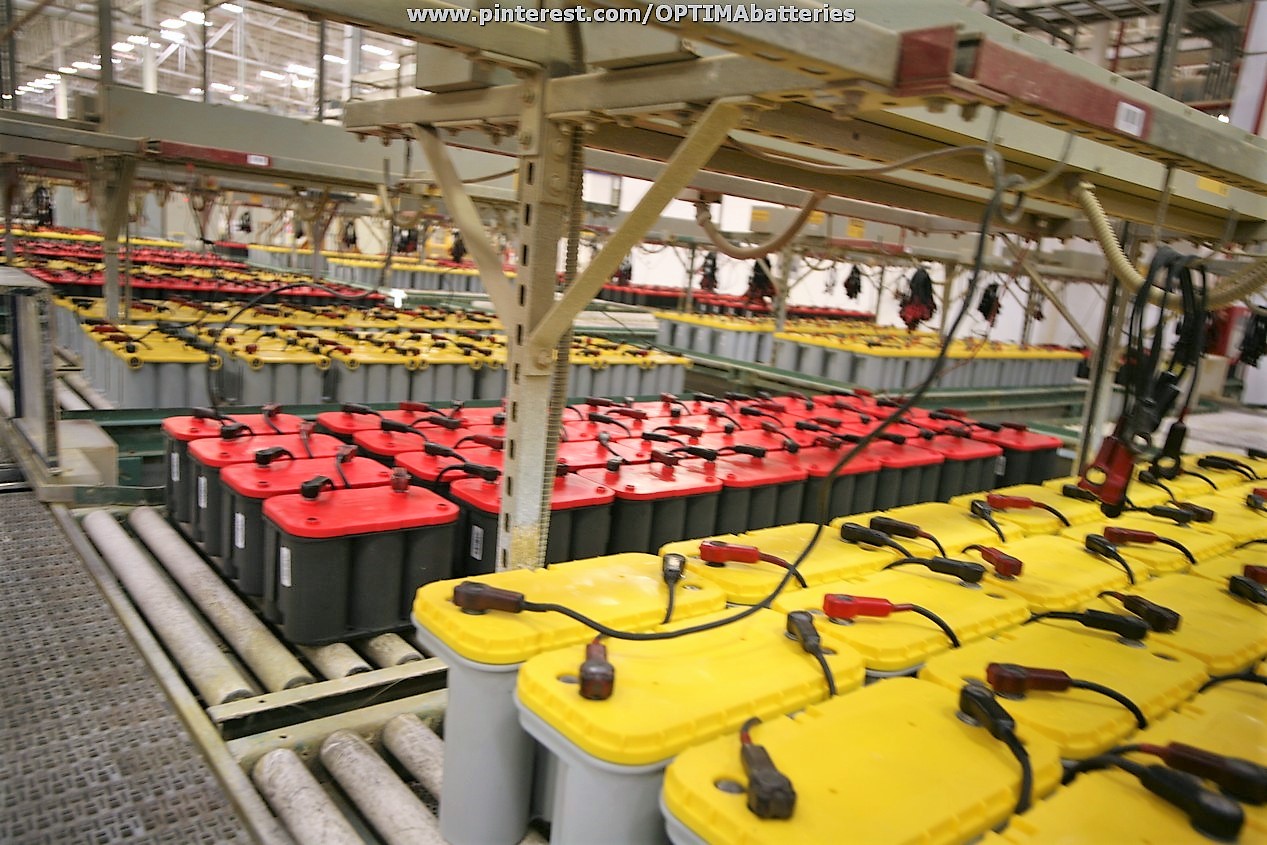Battery Reserve Capacity vs Amp Hour Ratings

Tips & Support
- Sponsor
- OPTIMA Batteries
- Location
- Glendale, WI


Most 12-volt batteries come with a variety of ratings to explain how much energy they hold and how it can be delivered, but there always seems to be some confusion surrounding the RC (Reserve Capacity) and AH (Amp Hour) ratings of batteries. We'd like to help clarify that for you, so here's the quick version- Reserve Capacity tells you how long your battery can run a 25-amp load as measured in minutes. Amp Hours tells you how much energy a battery can deliver over a 20-hour period of time (C20) until it is discharged to 10.5 volts, which is considered fully discharged.
Reserve Capacity Deeper Dive
So what scenario would Reserve Capacity be a relevant specification? Think of it in terms of how long a battery can keep your electrical system- lights, radio, electric pumps, etc... operating if the alternator were to fail. Reserve Capacity ends up offering insight into battery endurance as measured in minutes, under a specific load. The standard of measurement is delivering 25 amps at 80°F (26.7°C) until voltage drops to 10.5 volts, which is considered a 0% state of charge for most lead-acid batteries. With that failed alternator example, Reserve Capacity would be more relevant for comparing batteries used in automotive applications. For our 75/25 REDTOP the Reserve Capacity number is 90 minutes, but our D75/25 YELLOWTOP is 100 minutes.
That would make it seem like the YELLOWTOP is always the better choice, but the numbers move to the REDTOP's favor when we compare the ratings for cold cranking amps (CCA), where the 75/25 REDTOP is rated at 720CCA and the D75/25 YELLOWTOP is rated at 620CCA. So which battery is the right choice between the REDTOP and YELLOWTOP? If you just need a great starting battery for a stock vehicle, the REDTOP is an easy (and less expensive) choice. However, if your vehicle has significant electrical accessories, like an alarm system, dash camera, or aftermarket stereo system, then a YELLOWTOP is a better choice for both starting and deep-cycle use.
Amp Hours Deeper Dive
Think of a battery's AH rating like the total energy capacity of the battery. For the D75/25 YELLOWTOP the rating is 48AH, so if you have a draw of 4 amps, the battery theoretically can power that demand for 12 hours (4 amps x 12 hours = 48AH) or if you have an RV refrigerator that draws 2.4 amps, it could theoretically run for 20 hours. The industry standard is a 20-hour discharge to 10.5 volts, which allows you to compare the ratings of one battery with another, but the AH rating may be more relevant for batteries used in deep-cycle applications, like the RV refrigerator example or a trolling motor. The 75/25 REDTOP can hold and deliver 44AH of energy, while the D75/25 YELLOWTOP can hold and deliver 48AH of energy.
The Peukert Effect (there's always a catch, isn't there?)
When it comes to lead-acid batteries, the Peukert Effect describes how a battery's effective capacity may decrease when you draw power from it at a higher rate. In essence, the faster you drain a battery, the less total energy you will get out of it compared to its rated capacity. This is due to the fact that lead-acid batteries are less efficient at higher discharge rates, due to internal resistance and chemical limitations.
As it relates to Reserve Capacity, that measurement is already set at a 25-amp draw, so the Peukert Effect is already taken into consideration up to that level. However, if you were to draw 30 or 50 amps, the battery will last less time than expected because the Peukert Effect reduces the effective battery capacity. Something similar happens if you have two gallons of gas in your car and you cruise at 50 mph, versus stomping on the accelerator and driving at 90 mph- your fuel economy will decrease as you increase the speed of your car. Amp Hours are usually rated at a 20-hour discharge rate (C20), so if you tried to pull all 48AH out of a YELLOWTOP in one hour, instead of 2.4 amps over 20 hours, you may only get 38AH of energy, instead of all 48AH.
We should also note that lithium batteries, which OPTIMA offers in our ORANGETOP line for automotive, powersports and marine/RV use are less affected by this, so the 150AH rating of our Q31M-DC150 is likely to deliver that 150AH number, regardless of how quicky or slowly the energy is drawn.
As always, we'll leave you with the reminder that the best thing you can do to maximize battery performance and lifespan is to keep your battery voltage properly maintained whenever possible and a great way to do that is with an OPTIMA battery charger. We're so confident this is true, we'll add an additional year of free replacement warranty coverage to your OPTIMA battery when you buy it from us, if you also buy an OPTIMA D1200+ battery charger at the same time!
Reserve Capacity Deeper Dive
So what scenario would Reserve Capacity be a relevant specification? Think of it in terms of how long a battery can keep your electrical system- lights, radio, electric pumps, etc... operating if the alternator were to fail. Reserve Capacity ends up offering insight into battery endurance as measured in minutes, under a specific load. The standard of measurement is delivering 25 amps at 80°F (26.7°C) until voltage drops to 10.5 volts, which is considered a 0% state of charge for most lead-acid batteries. With that failed alternator example, Reserve Capacity would be more relevant for comparing batteries used in automotive applications. For our 75/25 REDTOP the Reserve Capacity number is 90 minutes, but our D75/25 YELLOWTOP is 100 minutes.
That would make it seem like the YELLOWTOP is always the better choice, but the numbers move to the REDTOP's favor when we compare the ratings for cold cranking amps (CCA), where the 75/25 REDTOP is rated at 720CCA and the D75/25 YELLOWTOP is rated at 620CCA. So which battery is the right choice between the REDTOP and YELLOWTOP? If you just need a great starting battery for a stock vehicle, the REDTOP is an easy (and less expensive) choice. However, if your vehicle has significant electrical accessories, like an alarm system, dash camera, or aftermarket stereo system, then a YELLOWTOP is a better choice for both starting and deep-cycle use.
Amp Hours Deeper Dive
Think of a battery's AH rating like the total energy capacity of the battery. For the D75/25 YELLOWTOP the rating is 48AH, so if you have a draw of 4 amps, the battery theoretically can power that demand for 12 hours (4 amps x 12 hours = 48AH) or if you have an RV refrigerator that draws 2.4 amps, it could theoretically run for 20 hours. The industry standard is a 20-hour discharge to 10.5 volts, which allows you to compare the ratings of one battery with another, but the AH rating may be more relevant for batteries used in deep-cycle applications, like the RV refrigerator example or a trolling motor. The 75/25 REDTOP can hold and deliver 44AH of energy, while the D75/25 YELLOWTOP can hold and deliver 48AH of energy.
The Peukert Effect (there's always a catch, isn't there?)
When it comes to lead-acid batteries, the Peukert Effect describes how a battery's effective capacity may decrease when you draw power from it at a higher rate. In essence, the faster you drain a battery, the less total energy you will get out of it compared to its rated capacity. This is due to the fact that lead-acid batteries are less efficient at higher discharge rates, due to internal resistance and chemical limitations.
As it relates to Reserve Capacity, that measurement is already set at a 25-amp draw, so the Peukert Effect is already taken into consideration up to that level. However, if you were to draw 30 or 50 amps, the battery will last less time than expected because the Peukert Effect reduces the effective battery capacity. Something similar happens if you have two gallons of gas in your car and you cruise at 50 mph, versus stomping on the accelerator and driving at 90 mph- your fuel economy will decrease as you increase the speed of your car. Amp Hours are usually rated at a 20-hour discharge rate (C20), so if you tried to pull all 48AH out of a YELLOWTOP in one hour, instead of 2.4 amps over 20 hours, you may only get 38AH of energy, instead of all 48AH.
We should also note that lithium batteries, which OPTIMA offers in our ORANGETOP line for automotive, powersports and marine/RV use are less affected by this, so the 150AH rating of our Q31M-DC150 is likely to deliver that 150AH number, regardless of how quicky or slowly the energy is drawn.
As always, we'll leave you with the reminder that the best thing you can do to maximize battery performance and lifespan is to keep your battery voltage properly maintained whenever possible and a great way to do that is with an OPTIMA battery charger. We're so confident this is true, we'll add an additional year of free replacement warranty coverage to your OPTIMA battery when you buy it from us, if you also buy an OPTIMA D1200+ battery charger at the same time!
